Did you know that more than 20% of senior dogs face mobility issues by the time they reach just seven years old? Mobility challenges in older dogs and senior dogs can come on fast—and watching your beloved pet struggle with climbing stairs, walking, or even rising from their bed is never easy. Whether your older dog is beginning to show signs of joint pain , is already an arthritic dog , or is experiencing an overall loss of mobility, learning quick, effective ways of managing dog mobility issues can transform both their comfort and quality of life. Read on for practical solutions you can start using at home today to help your dog regain confidence and joy.
Did You Know? Over 20% of Senior Dogs Experience Mobility Issues by Age Seven
As dogs age, their risk of developing mobility issues increases dramatically. Senior dogs—defined as those in the last third of their expected lifespan—commonly face joint pain, decreased muscle mass, and a decline in flexibility. In fact, studies show that by age seven, over 20% of senior dogs and older dogs begin to experience significant mobility challenges . These can range from mild stiffness and limping to severe mobility problems that threaten a dog's overall quality of life. Recognizing the early signs of mobility issues allows pet owners to act swiftly with both preventative and remedial solutions.
Addressing mobility problems as soon as they arise is crucial. While many pet owners assume these signs are simply part of getting older, prompt intervention can make a dramatic difference in managing dog mobility issues. Providing your dog with supportive home modifications, tailored therapies, and appropriate mobility aids will help maintain their independence for as long as possible. By prioritizing the health and comfort of your senior or older dog, you ensure that every stage of their life remains happy and healthy.

The Importance of Early Intervention in Managing Dog Mobility Issues
Early intervention is the backbone of successful outcomes when it comes to managing dog mobility issues . Acting fast upon noticing subtle symptoms such as hesitation on slippery surfaces or mild joint pain can halt or slow further deterioration. For instance, simple home modifications like adding non-slip rugs or rearranging furniture can prevent falls and encourage movement.
Timely diagnosis and treatment for underlying health issues—such as arthritis, hip dysplasia, or neurological disorders—are essential. Consulting your veterinarian for joint supplement guidance and exploring therapies such as physical therapy or laser therapy enables your older dog to stay comfortable and active. The sooner you begin, the more effective your efforts will be at preserving your dog’s quality of life and minimizing long-term damage.
Why Managing Dog Mobility Issues Is Crucial for Your Dog’s Quality of Life
Managing dog mobility issues has a direct impact on your dog’s quality of life . Mobility problems don’t just affect a dog physically—they also influence their emotional well-being and daily routines. By taking proactive steps, you minimize frustration, reduce joint pain, and empower your pet to enjoy exercise, socialization, and play well into old age. Senior dogs with managed mobility challenges remain active participants in their families, experiencing less isolation and more joy.
Senior dogs, arthritic dogs, and older dogs often hide pain out of instinct, so suffering may go unnoticed until the problem is severe. Caring for these vulnerable pets requires vigilance and decisive action at the first sign of trouble. Making comfort-centered home adjustments—paired with professional vet oversight—often leads to healthier, longer lives. Remaining attentive to even minor changes helps pet owners create safe, inspiring environments that encourage gentle movement rather than sedentary habits.
- Chronic arthritis and joint pain are leading contributors to mobility issues in both senior and older dogs.
- Slippery surfaces, such as polished wood or tile, increase fall risk and decrease confidence in movement.
- Weakening muscle mass combined with pain can accelerate loss of mobility if not addressed promptly.
- Arthritic dogs, especially those with hip dysplasia, benefit greatly from daily gentle exercise and home support.
"When it comes to your dog’s mobility issues, time is muscle. Acting fast can dramatically improve the quality of life for senior dogs and older dog populations." – Dr. Karen Miller, Veterinary Rehabilitation Specialist
What You’ll Learn About Managing Dog Mobility Issues
- How to identify common mobility problems in senior dogs and older dogs
- Quick home adjustments to address mobility issues
- Effective therapies for dogs with mobility problems
- Tools, treatments, and exercises for pain management and mobility restoration
Signs and Symptoms: Recognizing Mobility Issues in Senior Dogs
Recognizing the signs and symptoms of mobility problems early in senior dogs can be life-changing. Dogs suffering from mobility issues may show subtle or overt changes in behavior and movement. Watch closely for limping, reluctance to walk or climb stairs, and hesitation on slippery surfaces. These can signal discomfort from joint pain or indicate the early stages of conditions like osteoarthritis or spondylosis.
Senior dogs often develop a change in gait, standing or walking with noticeable stiffness. Refusing to jump into cars or onto furniture, or experiencing difficulty rising from a lying position, are all red flags. Noticing a decrease in playfulness, shorter walks, or an inability to keep up with a younger dog are also clues that your older dog is facing mobility challenges.
How to Spot Mobility Problems and Loss of Mobility in Older Dogs
Pet owners should be vigilant for early warning signs such as subtle limping, unexplained fatigue, or changes in posture. Loss of confidence during daily activities—like avoiding stairs or pausing before movement—often points to discomfort and an underlying mobility issue . Pay particular attention if your dog sits down more often, drags a limb, or appears unsure when navigating new environments.
Checking your dog's paw pads regularly can help identify soreness from overcompensating due to joint pain. Sensitive joints may provoke little yelps or resistance when touched. Owners of older dogs should also monitor for balance problems or episodes of stumbling, which may suggest neurological factors. The presence of these signs means it’s time to prioritize managing dog mobility issues at home and with your veterinary team.
- Limping, refusal to climb stairs
- Reluctance or inability to jump or rise
- Noticeable joint pain or stiffness
- Changes in gait or posture

"If your older dog suddenly avoids walks or hesitates to move, it’s a sign that managing dog mobility issues should become a priority."
Causes of Mobility Issues in Dogs: From Joint Pain to Health Conditions
Mobility issues in dogs are caused by a range of factors, from musculoskeletal problems to neurological disorders. The most common culprit is arthritis , which is a progressive degeneration of the joints leading to joint pain, swelling, and reduced range of motion. Other health issues like spondylosis—an arthritic backbone condition—cause back pain and rear leg weakness. Neurological disorders, injuries, or severe hip dysplasia can also result in a significant loss of mobility.
Identifying the root cause of your dog's mobility problems is essential for effective management. Senior dogs are more susceptible to these conditions than younger dogs, but certain breeds and larger dogs also have increased risk. Caring for arthritic dogs, those with hip dysplasia, or dogs suffering from other chronic health conditions involves not only symptom relief but also preventing further deterioration with proactive steps.
The Role of Arthritis, Neurological Disorders, and Other Health Issues
While arthritis is the leading cause, other underlying health issues can create similar symptoms. Spondylosis causes bony growths along the spine, reducing flexibility and causing pain during movement. Neurological problems, including degenerative myelopathy or spinal injuries, may result in incoordination, paw dragging, or imbalance. Effective management includes both at-home care for mild symptoms and professional veterinary support for complex health issues.
| Common Causes of Mobility Issues in Dogs | Symptoms | At-Home Management |
|---|---|---|
| Arthritis | Joint stiffness, lameness | Joint supplements, warm bedding |
| Spondylosis | Back leg weakness, spinal pain | Regular low-impact exercise, pain relief |
| Neurological disorders | Dragging paws, imbalance | Rehab exercises, harnesses |
Quick Home Fixes for Managing Dog Mobility Issues
Making your home safer and more accessible helps alleviate mobility problems and supports your senior dog’s comfort level. Simple modifications, such as placing non-slip rugs in high-traffic areas, installing ramps over stairs, and elevating food and water bowls, encourage your older dog to remain active. These adjustments provide the stability and confidence needed to navigate slippery surfaces.
Orthopedic beds support achy joints, while assistive harnesses enable easy lifting for stairs or car rides. By supporting your senior dog’s daily routine with these quick fixes, you’ll help them conserve energy, reduce pain, and enjoy daily activities like eating and sleeping more comfortably.
Simple Adjustments to Improve Quality of Life for Dogs With Mobility Issues
- Adding non-slip rugs and ramps
- Elevating food and water bowls for older dog comfort
- Installing orthopedic beds
- Using harnesses to assist senior dogs up stairs
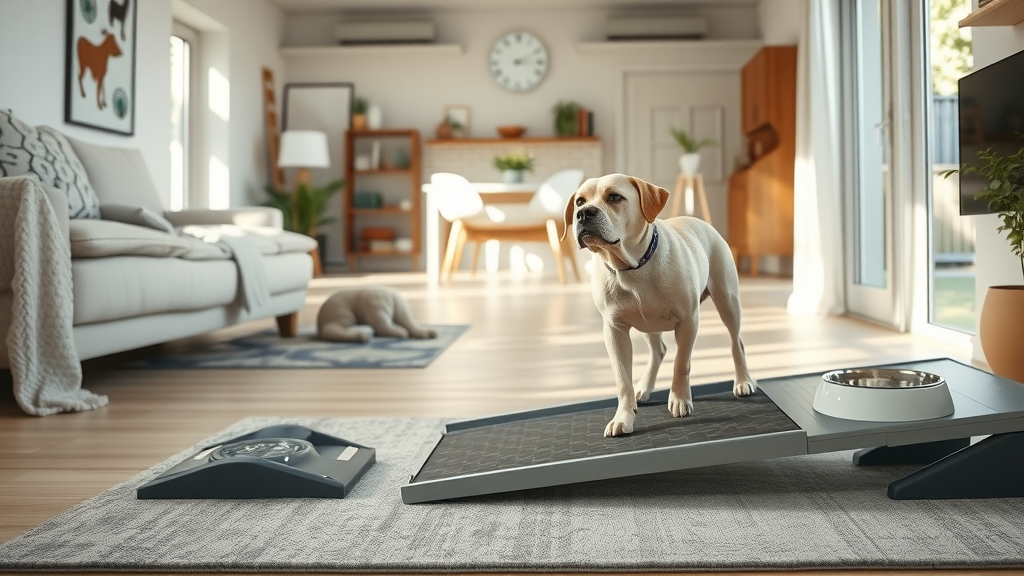
Top Treatments and Therapies for Dogs With Mobility Problems
For many dogs with mobility issues, a multi-modal approach works best. The most effective treatments combine lifestyle adjustments, physical therapy, and targeted veterinary interventions. Canine physical therapy improves muscle mass, increases flexibility, and helps maintain range of motion. Hydrotherapy allows arthritic dogs to move with less strain on joints, boosting both strength and confidence in movement. Laser therapy is quickly gaining popularity for its ability to reduce inflammation and provide long-lasting relief from chronic joint pain.
Veterinarians may recommend supplements or anti-inflammatory medications to help control pain and stiffness in senior dogs with mobility problems. Always consult your vet before starting new treatments or supplements. Together, these therapies provide comprehensive strategies for managing dog mobility issues and restoring your pet’s quality of life.
Physical Therapy and Laser Therapy Options for Managing Dog Mobility Issues
- Benefits of canine physical therapy
- How laser therapy relieves joint pain in senior dogs
- Supplements and anti-inflammatory medications
- Hydrotherapy for arthritic dogs
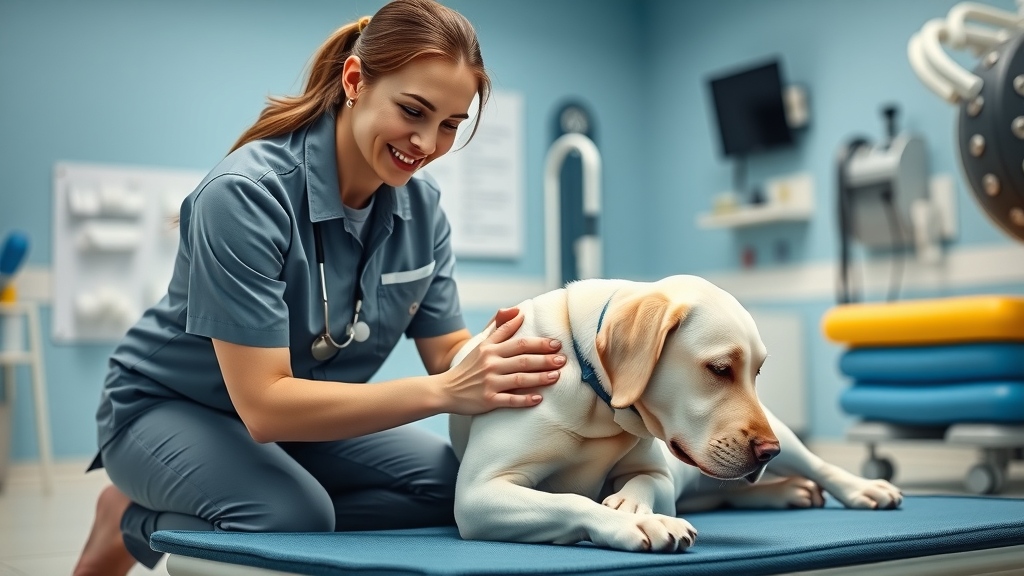
DIY At-Home Exercises to Help Your Dog With Mobility Issues
Exercises tailored to your dog’s ability level are crucial for maintaining flexibility and minimizing further loss of mobility. For older dogs and those with health conditions, gentle assisted walking routines work wonders. Aim to create a daily schedule that combines slow, controlled walks with strengthening moves that target the hips and legs. These routines are an essential aspect of managing dog mobility issues , supporting joint health and boosting your dog’s confidence in their abilities.
Balance and coordination exercises, such as slowly guiding your dog over soft cushions or minor obstacles, enhance proprioception and reduce injury risk on slippery surfaces. Always monitor your pet’s response, and reduce intensity at any sign of discomfort or paw pad sensitivity. These DIY exercises are best when introduced alongside veterinary-approved physical therapy.
Stretches and Strengthening Moves for Senior Dogs and Dogs With Mobility Problems
- Gentle assisted walking routines
- Targeted leg and hip strengthening exercises
- Balance and coordination tasks
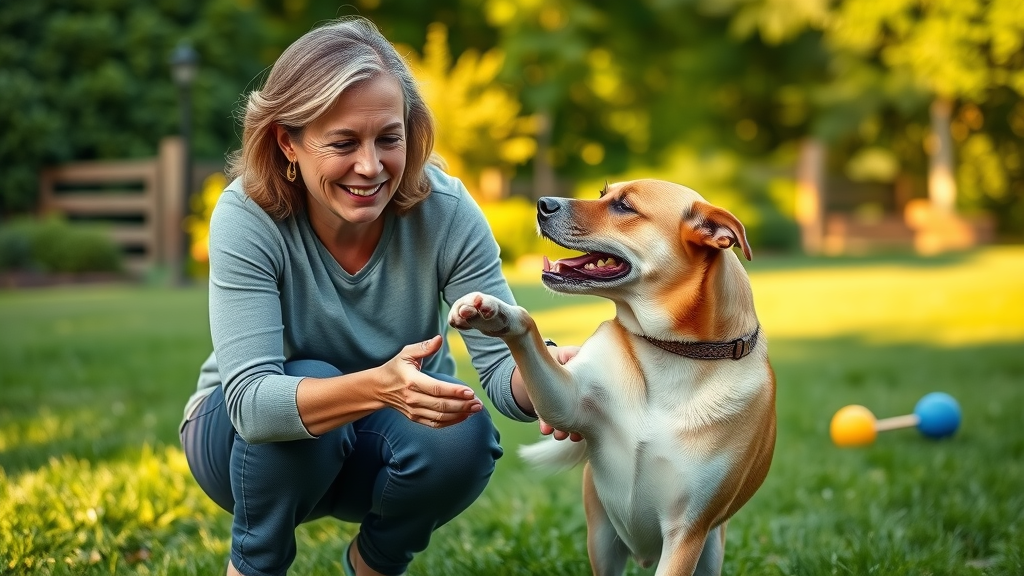
Mobility Aids and Assistive Devices: Tools for Managing Dog Mobility Issues
Many dogs with mobility challenges benefit from supportive devices that reduce strain on aching joints. Harnesses designed for lifting help pets up stairs, onto furniture, or into vehicles, offering back and hip support with minimal fuss. Portable ramps make it safer for your dog to navigate steps or get in and out of the car without risking further injury. For more severe cases of loss of mobility, products like orthopedic braces or wheeled carts can restore independence and keep your dog happy and healthy.
Choosing the right device depends on the severity and progression of your dog’s mobility issue. Consult your veterinarian or a canine rehabilitation specialist for guidance on the best mobility aids for your senior dog’s unique needs. These support tools are vital for reducing falls, increasing activity, and maintaining your pet’s dignity.
Harnesses, Ramps, and Carts for Dogs With Mobility Issues
- Choosing the right harness for your senior dog
- Portable ramps for easier car and home access
- Orthopedic braces and wheeled carts for severe mobility problems
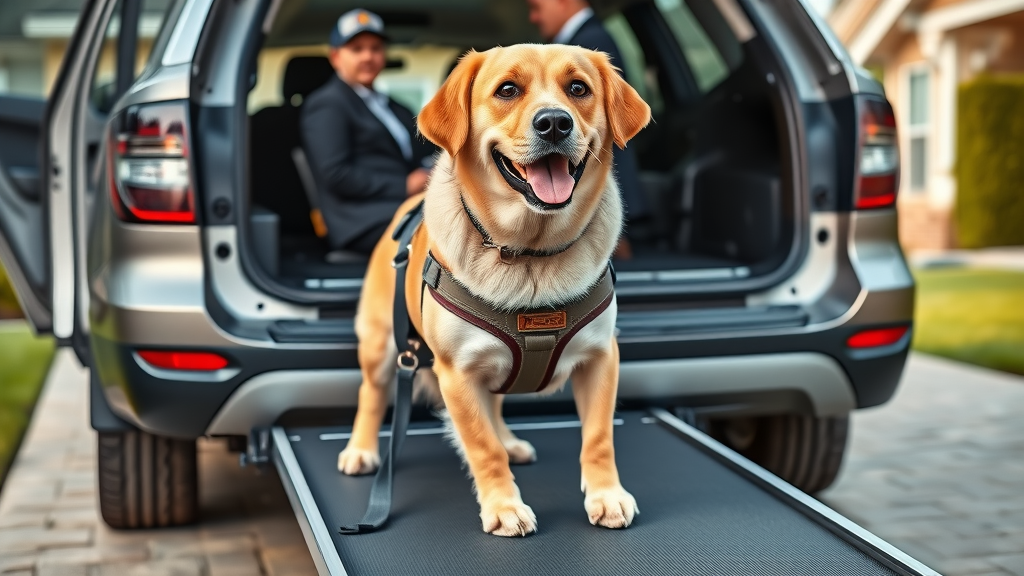
When to See the Vet: Dogs With Health Issues Impacting Mobility
Some symptoms mean it’s time to contact your veterinarian right away. Sudden paralysis, severe pain, complete refusal to walk, or incontinence are red flag symptoms that may signal serious health issues like spinal injuries or neurological problems. Your veterinarian will perform a detailed examination, including diagnostic tests such as X-rays, blood panels, or even advanced imaging, to identify the cause of the mobility issue.
Depending on the diagnosis, your vet might suggest advanced therapies, surgical intervention, or refer you to a veterinary rehabilitation specialist for continued management. Remember: timely medical attention prevents irreversible complications and gives your older dog the best chance at regaining mobility and a high comfort level.
Recognizing When Mobility Issues Signal Serious Health Conditions
- Red flag symptoms requiring urgent veterinary care
- Diagnostic tests and veterinary treatments for mobility issues
Preventative Measures: How to Reduce Future Mobility Problems
Prevention is always easier than cure, especially for senior dogs and those at risk of mobility challenges. Maintaining a healthy weight reduces excess strain on joints and delays the progression of arthritis and other orthopedic conditions. Feeding your dog a balanced, nutrient-dense diet with supplements like glucosamine and omega-3 fatty acids supports joint health and keeps muscle mass strong.
Schedule routine veterinary screenings for older and senior dogs to catch health conditions before symptoms appear. Exercise should be low-impact but consistent—think short, frequent walks over rough terrain or carpeted surfaces. Building these habits early gives your older dog the best chance at aging gracefully, with fewer episodes of joint pain and loss of mobility.
Diet, Exercise, and Regular Check-Ups for Senior Dogs
- Weight management to reduce joint pain
- Supplements to support joint health
- Routine veterinary screenings

Real Stories: Improving Quality of Life for Dogs With Mobility Problems
Pet owners around the world have found tremendous success through proactive home adjustments and regular exercise. For instance, one devoted caregiver noticed her senior dog’s reluctance to walk and immediately installed ramps, non-slip rugs, and began daily gentle exercise routines. Within weeks, her older dog regained confidence, happily ventured on walks, and saw a reduction in joint pain. This real-world example underscores the value of early intervention and environment modification in managing dog mobility issues.
"Implementing ramps and daily gentle exercises helped my senior dog regain confidence and enjoyment on our walks." – Pet Owner
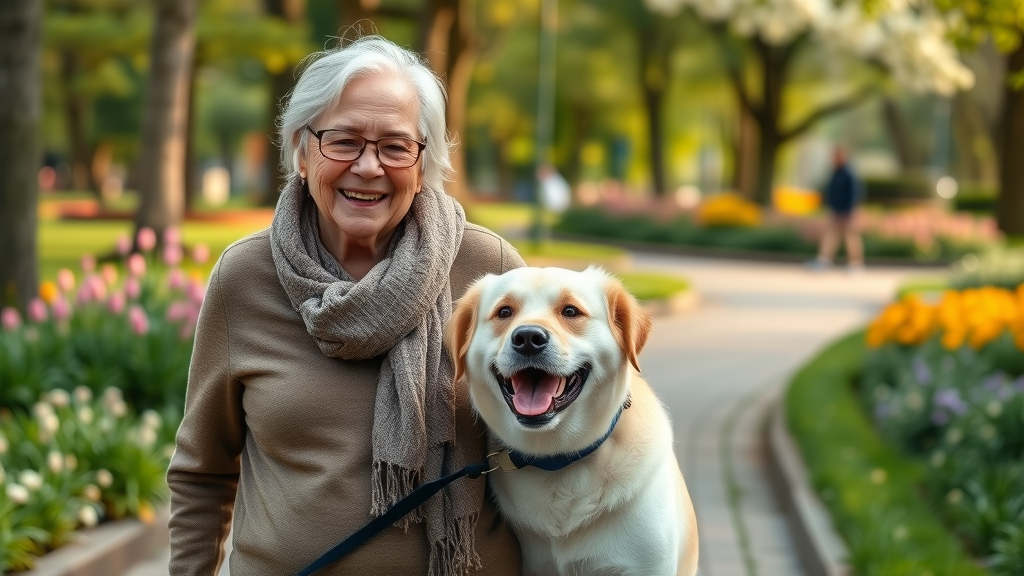
People Also Ask: How Do I Help My Dog With Mobility?
Practical Steps for Managing Dog Mobility Issues at Home
- Ensure comfort with orthopedic bedding
- Maintain a healthy weight
- Engage in low-impact exercises
Establishing a supportive home environment, keeping weight in check, and exercising appropriately can make all the difference for dogs with mobility challenges. Use raised food and water bowls to ease discomfort, and choose gentle surfaces to reduce slip and fall risks. Consistency is key—daily, moderate activity keeps joints flexible and muscles strong.
People Also Ask: How Do You Help a Dog That Is Having Trouble Walking?
Immediate Actions and Support for Dogs With Mobility Issues
- Assist with a harness or sling
- Clear obstacles and offer traction with rugs
- Schedule a veterinary evaluation
If your dog is suddenly having trouble walking, first ensure their safety by keeping them off slippery surfaces, using supportive harnesses, and clearing pathways. Offer gentle guidance rather than forcing movement. Contact your veterinarian right away for a thorough assessment of underlying injuries or health issues that may require immediate treatment.
People Also Ask: How Do You Treat Spondylosis in Dogs at Home?
Home-Based Treatments for Dogs Facing Spondylosis and Mobility Problems
- Encourage gentle, frequent movement
- Use supportive bedding and ramps
- Work with a vet for pain management plans
At home, support dogs with spondylosis by making regular, brief movement part of their routine. Keep them comfortable with specialized bedding and ramps instead of stairs. Collaborate with your veterinarian to develop a pain relief and medication regimen tailored to your dog’s specific needs.
People Also Ask: How Can I Help My Senior Dog With Weak Back Legs?
Effective Home Strategies for Older Dogs With Mobility Problems
- Manual support with walking harnesses
- Physical therapy routines for leg strength
- Joint health supplements as recommended by vets
When helping a senior dog with weak back legs, the right harness or sling allows safe mobility during walks. Begin gentle, vet-approved physical therapy to rebuild muscle strength and improve joint support. Always use supplements only as advised by your veterinarian for optimal joint and nerve function.
Frequently Asked Questions About Managing Dog Mobility Issues
- What are the best supplements for dog mobility problems? Glucosamine, chondroitin, and omega-3 fatty acids are commonly recommended for managing dog mobility issues. Always check with your veterinarian before starting any new supplements to address arthritis, joint pain, or loss of mobility.
- Can massage help my senior dog's mobility issue? Yes! Gentle massage increases circulation, reduces stiffness, and eases muscle tension, providing comfort for senior dogs with mobility problems. Always observe your dog’s response and consult a professional for guidance.
- Is there a difference between mobility issues in large and small dogs? Larger dogs are more prone to certain orthopedic conditions like hip dysplasia, while smaller breeds may suffer more from spinal issues. However, mobility issues can impact both size groups and require similar at-home support and therapies.
- Should I walk my dog with mobility problems? Yes! Low-impact, regular walks are beneficial for dogs with mobility challenges. Tailor duration and intensity based on your veterinarian’s advice and always monitor for signs of fatigue or increased joint pain.
Summary: Quick Steps for Managing Dog Mobility Issues Day-to-Day
- Monitor your senior dog for early signs of mobility issues
- Make rapid home environment modifications
- Partner with your vet for advanced therapies and ongoing care
"With the right support and dedication, managing dog mobility issues can restore dignity and joy to your dog’s life."
Take Action: Support Your Dog’s Health by Managing Dog Mobility Issues Today
Start now—implement home fixes, consult your veterinarian, and embrace every tool available for managing dog mobility issues, ensuring your dog remains happy and mobile for years to come.
To further enhance your understanding of managing dog mobility issues, consider exploring the following resources:
- “Creating a Comfortable Home for Your Mobility Compromised Dog” ( vcahospitals.com )
This article offers practical advice on home modifications to assist dogs with mobility challenges, including tips on flooring, bedding, and supportive devices.
- “Senior Dogs 101: How to Deal with Mobility Loss, Deafness, Blindness, and Dementia in Senior Dogs” ( smalldoorvet.com )
This comprehensive guide addresses various aspects of senior dog care, focusing on managing mobility loss through therapies, home adjustments, and dietary considerations.
If you’re serious about improving your dog’s mobility and overall well-being, these resources provide valuable insights and actionable strategies.
 Add Row
Add Row  Add
Add 






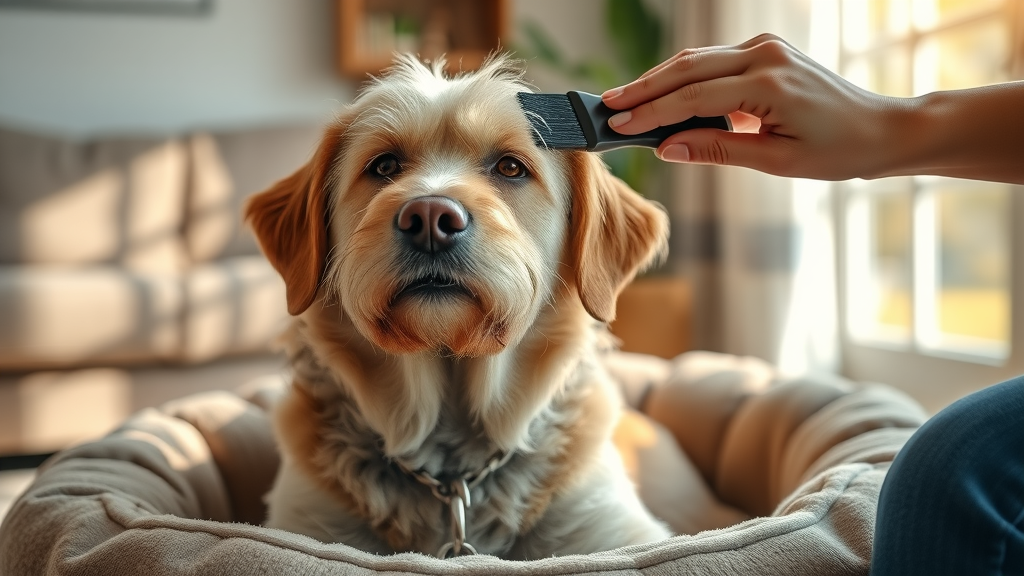

Write A Comment